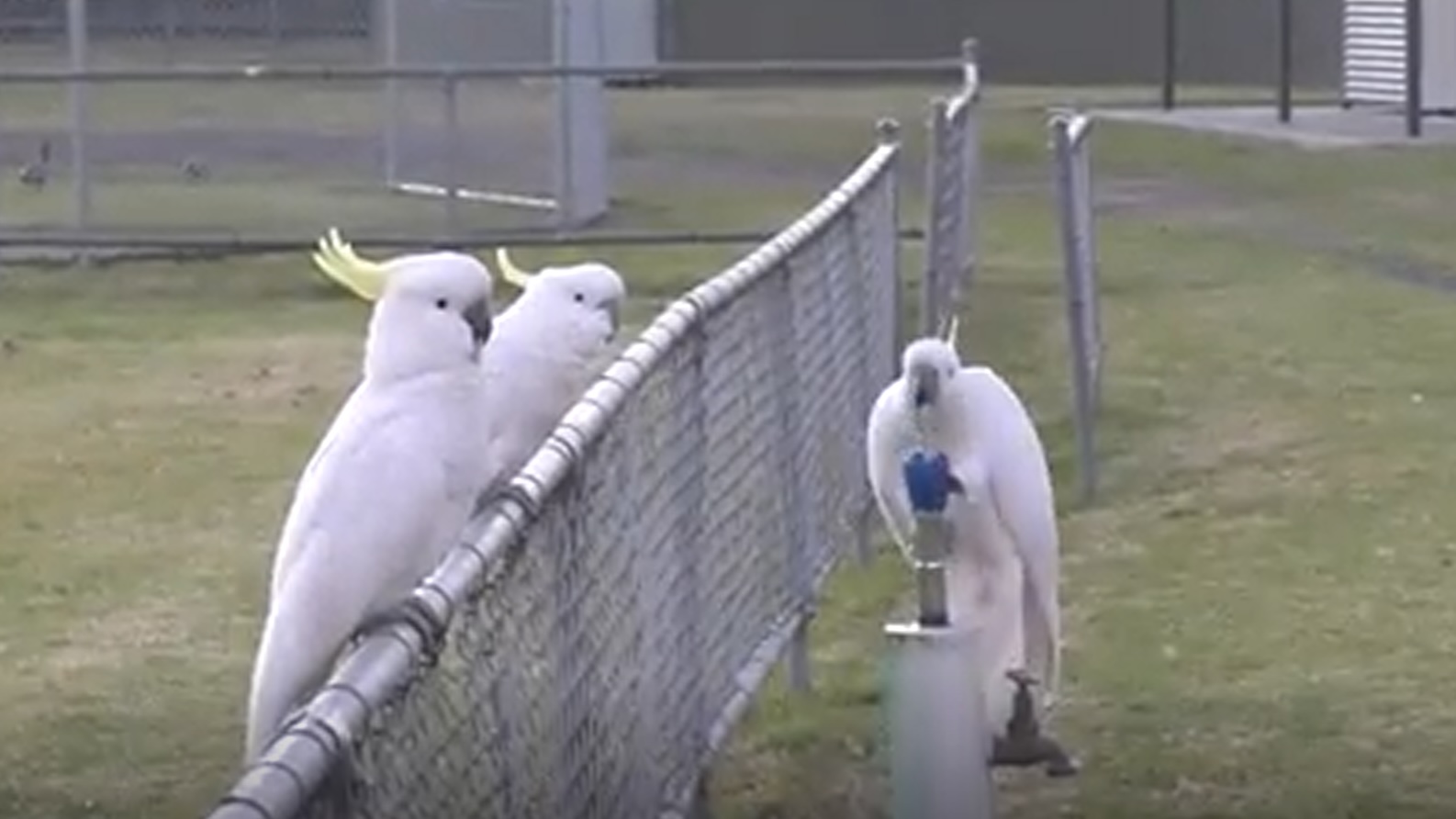Australian 'trash parrots' have now developed a local 'drinking tradition'
Wild cockatoos in Western Sydney have learned to drink from water fountains — choosing to drink from them even if they have to queue.
Wild cockatoos in Sydney, Australia have learned to drink from twist-handle water fountains, turning the knob with their feet and using their body weight to keep it open. They even queue to have a drink, waiting to take turns on the fountain, footage shows.
The behavior qualifies as a new local tradition, according to a study published Wednesday (June 4) in the journal Biology Letters that analyzed videos of these cockatoos showing off their fountain-manipulating skills.
City animals are remarkably flexible. Fast-changing urban environments can push animals to solve new problems. Some urban birds adapt their songs to be audible over noise pollution, or use human-made structures as substitutes for their natural nesting habitats. Studies have linked bigger brain size and more innovativeness to bird species that live in cities, meaning species that innovate and problem solve tend to adapt better in cities.
Cockatoos are particularly intelligent birds, able to use tools, solve puzzles, and even play golf. Sulphur-crested cockatoos (Cacatua galerita) are native to Australia, and in Sydney they have learned to open trash bins, earning them the nickname "trash parrots." They even manage to outwit humans trying to deter them in what scientists describe as an "innovation arms race."
"[Cockatoos] have a playful curiosity," Alice Auersperg, cognitive biologist at the University of Veterinary Medicine Vienna in Austria who was not involved in the new study, told Live Science in an email. "They are highly persistent in their object manipulation, and easily reinforced if a behavior turns out to be rewarding."
Related: Do parrots actually understand what they're saying?
One researcher walking in Western Sydney in 2018 came across sulphur-crested cockatoos queuing up to use a drinking fountain. "When she reported this to the lab group, we all got very excited, and started planning how to best further study this unusual behavior," study co-author Lucy Aplin, a cognitive ecologist at Australian National University, told Live Science in an email.
Get the world’s most fascinating discoveries delivered straight to your inbox.
The research team installed two motion-triggered cameras surrounding one drinking fountain with a rubber top with embedded spout, and a spring-loaded twist handle. Analyzing the videos showed that operating these water fountains is not easy to stumble upon by accident: it requires fine motor skills and a coordinated sequence of actions. The cockatoos use both feet to manipulate the twist handle, then lower their weight to turn the handle clockwise and keep it from springing back. Around 50% of the cockatoos' attempts to open the fountain in the videos ended in success.

"I was not surprised to see that cockatoos in Sydney had learned how to use water fountains," Berenika Mioduszewska, animal cognition researcher at the University of Veterinary Medicine Vienna who was not involved in the new study, told Live Science in an email. "These birds are highly curious and manipulative. If the design of a fountain incidentally allows for cockatoo manipulation, it may only be a matter of time before an inquisitive individual starts playing with it and discovers a new source of water."
Aplin said the behavior probably began as an individual innovation, then spread in the local population through observing other birds. But individual cockatoos do have distinct styles in the way they operate the fountain, so while they may have gotten the idea to use the fountain from other birds, they likely worked out the fine details individually through trial and error.
"Altogether, this tells us that this behavior is widespread and well established within the local population of birds, with some birds fully knowledgeable, and others still in the process of learning," Aplin said. "That suggests that it has spread to form a local 'drinking tradition' in the area."
It's not completely clear why these birds choose to solve this complex puzzle to drink from water fountains, when other water sources are available. The cockatoos appear to use the drinking fountains as their main source of water, regardless of whether there's a queue. The researchers theorize the birds prefer the taste of the water, or they feel safer from predators at a fountain in an open area with better visibility of potential threats.
The research is part of a larger project, the "Clever Cockie Project," which studies how behavioral flexibility could enable cognitively complex species like cockatoos to adapt in cities.
"The paper also highlights the importance of persistence and focus: longer attempts at the water fountains, and those made when fewer other cockatoos were present, were significantly more likely to succeed," Mioduszewska said. "It offers a valuable lesson from the cockatoos — when mastering a skill, it is important to keep trying and to minimize distractions whenever possible."
Bird quiz: How much do you know about our feathered friends?

Olivia Ferrari is a New York City-based freelance journalist with a background in research and science communication. Olivia has lived and worked in the U.K., Costa Rica, Panama and Colombia. Her writing focuses on wildlife, environmental justice, climate change, and social science.
You must confirm your public display name before commenting
Please logout and then login again, you will then be prompted to enter your display name.


